Customized Bus Network Design Based on Individual Reservation Demands
Abstract
:1. Introduction
2. CB Network Design Methodology
2.1. CB Network Design Processing
2.2. Individual Reservation Travel Demand Data Processing
2.3. CB Line OD Area Division
2.4. Initial Set of CB Lines Generating
2.5. Line Selection Model Building
2.6. Service Level Evaluation
3. Case Study
3.1. Data Processing
3.2. CB Line OD Areas
3.3. Initial Line Set
3.4. Optimized CB Lines
- From ShiQiao GuoMao Serviced Apartment to Beijing Gateway Plaza (with a total travel demand of 100 trips and CB demand for 98 trips);
- From Shifoying Dongli to Capital Institute of Pediatrics (with a total travel demand of 84 trips and CB demand of 84 trips);
- From Xibahedongli to CBD Core Area (with a total travel demand for 67 trips and CB demand for 67 trips);
- From Xinkangjiayuan to Jingdong Dasha (with a total travel demand for 64 trips and CB demand for 64 trips);
- From Linglongtiandi to Haixing Dasha (with a total travel demand for 62 trips and CB demand for 62 trips); and
- From Juyuan Beili to Shunsitiao (with total travel demands for 62 trips and CB demands for 62 trips).
- From ShiQiao GuoMao Serviced Apartment to Beijing Gateway Plaza (with a travel demand for 100 trips and CB demand for 90 trips);
- From Shifoying dong li to Capital Institute of Pediatrics (with a total travel demand of 84 trips and CB demand for 84 trips);
- From Xibahedongli to CBD Core Area (with a total travel demand for 67 trips and CB demand for 60 trips);
- From Xinkangjiayuan to Jingdong Dasha (with a total travel demand for 64 trips and CB demand for 60 trips);
- From Linglongtiandi to Haixing Dasha (with a total travel demand for 62 trips and CB demand for 60 trips); and
- From Juyuan Beili to Shunsitiao (with a total travel demand for 62 trips and CB demand for 60 trips).
4. Sensitivity Analysis
4.1. Problem Statement
4.2. The Influence of
4.3. The Influence of , , and
4.4. The Influence of
5. Conclusions
Author Contributions
Funding
Acknowledgments
Conflicts of Interest
Appendix A. Sets, Indices, and Parameters
| Symbol | Definition |
| Set of origins in raw data depicted in Table 2 | |
| Set of destinations in raw data depicted in Table 2 | |
| Set of origins deleting the data whose line distance is less than | |
| Set of destinations corresponding to data set | |
| Set of origins eliminating elements that do not conform to the regulations | |
| Set of destinations eliminating elements that do not conform to the regulations | |
| Set of destinations that conform to the regulations of line length and elements | |
| U | Set of initial lines |
| Number of reservation demands | |
| Number of origin categories | |
| Number of elements in origin category , | |
| Number of elements in category | |
| Number of destination categories | |
| Number of elements in destination category , | |
| Number of demands for line i | |
| L | Number of lines that are connected by paring OD areas |
| Low limit demands in one origin area considered to be served by CB | |
| Low limit demands in one destination area considered to be served by CB | |
| Line distance of demand n between its’ origin and destination, | |
| Low limit line length considered to be served by CB | |
| Line distance between the centroid and destination of the element m in origin category , | |
| Low limit line distance between the centroid of origin category and the corresponding destinations | |
| Line length of line i | |
| Minimum line length | |
| Total operating cost on line i, | |
| Fuel cost per kilometer per bus for the CB type j, | |
| Ω | Number of CB vehicle types which have different maximum load capacities |
| Number of vehicles for the CB type j on line i | |
| Mileage on the line i | |
| Fixed operating cost per bus per day for the CB type j | |
| Fuel cost per kilometer per car for OCH | |
| Number of vehicles for OCH on line i | |
| Fixed operating cost per OCH vehicle per day | |
| Total environmental pollution cost on line i | |
| Environmental pollution cost per unit of pollution | |
| Pollutant emissions per bus per kilometer for the CB type j | |
| Pollutant emissions per OCH per kilometer | |
| The total congestion cost on line i | |
| Value per unit of time | |
| Average running speed of the bus in the case of exclusive bus lanes and traffic congestion | |
| Average running speed of buses during normal running | |
| Number of people travelling by CBs on line i | |
| Average running speed of cars in the case of traffic congestion | |
| Average running speed of cars during normal running | |
| Number of people travelling by OCH on line i | |
| v | Average speed of OCH |
| Total cost of tickets on line i | |
| CB fare per person per kilometer charging for distances above | |
| CB fixed fare charging for the distance within (including ) | |
| Mileage boundary of CB for changes in fare rates | |
| Mileage boundary of OCH for changes in fare rates | |
| Minimum fare | |
| OCH distance fare | |
| Time fare based on time interval | |
| Long distance fare charging for the distance above 20 km | |
| Total cost of line i | |
| Operating cost weight | |
| Environmental cost weight | |
| Traffic congestion cost weight | |
| Cost weight of fares paid by passengers | |
| Number of people traveling by CB vehicle of type j on each line | |
| Maximum load capacities per CB vehicle of type j | |
| Travel distance of passengers on each line | |
| Total travel demand on each line | |
| Average load capacity per OCH | |
| Total line length when , , , and | |
| Total number of CB passengers when , , , and | |
| The total cost when , , , and | |
| . | Total line length when , , , and |
| Total number of CB passengers when , , , and | |
| Total cost when , , , and | |
| Total line length when , , , and | |
| The total number of CB passengers when , , , and | |
| . | Total cost when , . , , and |
| The service rate when , , , and | |
| Average load factor when , , , and | |
| The site coverage rate when , , , and | |
| Service rate when , , , and | |
| Average load factor when , , , and | |
| Site coverage rate when , , , and | |
| Service rate when , , , and | |
| Average load factor when , , , and | |
| Site coverage rate when , , , and |
References
- Dias, F.F.; Lavieri, P.S.; Kim, T.; Bhat, C.R.; Pendyala, R.M. Fusing Multiple Sources of Data to Understand Ride-Hailing Use. Transp. Res. Rec. 2019, 2673, 214–224. [Google Scholar] [CrossRef]
- Jain, S.; Ronald, N.; Thompson, R.; Winter, S. Predicting susceptibility to use demand responsive transport using demographic and trip characteristics of the population. Travel Behav. Soc. 2017, 6, 44–56. [Google Scholar] [CrossRef]
- Lyu, Y.; Chow, C.Y.; Lee, V.; Ng, J.; Li, Y.H.; Zeng, J. CB-Planner: A bus line planning framework for customized bus systems. Transp. Res. C-Emer. 2019, 101, 233–253. [Google Scholar] [CrossRef]
- Amirgholy, M.; Gonzales, E.J. Demand responsive transit systems with time-dependent demand: User equilibrium, system optimum, and management strategy. Transp. Res. B-Meth. 2016, 92, 234–252. [Google Scholar] [CrossRef]
- Shen, J.; Yang, S.; Gao, X.; Qiu, F. Vehicle routing and scheduling of demand-responsive connector with on-demand stations. Adv. Mech. Eng. 2017, 9. [Google Scholar] [CrossRef]
- Chen, P.W.; Nie, Y.M. Analysis of an idealized system of demand adaptive paired-line hybrid transit. Transp. Res. B-Meth. 2017, 102, 38–54. [Google Scholar] [CrossRef]
- Liu, T.; Ceder, A.A. Analysis of a new public-transport-service concept: Customized bus in China. Transp. Policy 2015, 39, 63–76. [Google Scholar] [CrossRef]
- Guo, R.G.; Guan, W.; Zhang, W.Y. Route Design Problem of Customized Buses: Mixed Integer Programming Model and Case Study. J. Transp. Eng. A-Syst. 2018, 144. [Google Scholar] [CrossRef]
- Li, Y.; Yan, X.; Shao, W. Scheduling Optimization Method of Single-line Customized Bus. In Proceedings of the 2nd International Conference on Mechanical, Electronic, Control and Automation Engineering, Qingdao, China, 30–31 March 2018. [Google Scholar]
- Tong, L.; Zhou, L.S.; Liu, J.T.; Zhou, X.S. Customized bus service design for jointly optimizing passenger-to-vehicle assignment and vehicle routing. Transp. Res. C-Emer. 2017, 85, 451–475. [Google Scholar] [CrossRef]
- Ma, J.; Yang, Y.; Guan, W.; Wang, F.; Liu, T.; Tu, W.; Song, C. Large-Scale Demand Driven Design of a Customized Bus Network: A Methodological Framework and Beijing Case Study. J. Adv. Transp. 2017, 2017. [Google Scholar] [CrossRef]
- Li, J.; Lv, Y.; Ma, J.; Ouyang, Q. Methodology for Extracting Potential Customized Bus Routes Based on Bus Smart Card Data. Energies 2018, 11, 2224. [Google Scholar] [CrossRef]
- Ma, J.H.; Zhao, Y.Q.; Yang, Y.; Liu, T.; Guan, W.; Wang, J.; Song, C.Y. A Model for the Stop Planning and Timetables of Customized Buses. Plos ONE 2017, 12. [Google Scholar] [CrossRef] [PubMed]
- Li, Z.; Song, R.; He, S.; Bi, M. Methodology of mixed load customized bus lines and adjustment based on time windows. Plos ONE 2018, 13. [Google Scholar] [CrossRef] [PubMed]
- Lyu, Y.; Chow, C.; Lee, V.C.S.; Li, Y.; Zeng, J. T2CBS: Mining Taxi Trajectories for Customized Bus Systems. Comput. Commun. Workshops IEEE 2016, 441–446. [Google Scholar] [CrossRef]
- Zhang, M.; Liu, J.; Liu, Y.; Hu, Z.; Yi, L. Recommending Pick-up Points for Taxi-drivers based on Spatio-temporal Clustering. In Proceedings of the 2nd International Conference on Cloud and Green Computing/2nd International Conference on Social Computing and its Applications (CGC/SCA), Xiangtan, China, 1–3 November 2012. [Google Scholar]
- Zhu, W.; Lu, J.; Li, Y.; Yang, Y. A Pick-Up Points Recommendation System for Ridesourcing Service. Sustainability 2019, 11, 1097. [Google Scholar] [CrossRef]
- Zhao, P.; Liu, X.; Shen, J.; Chen, M. A network distance and graph-partitioning-based clustering method for improving the accuracy of urban hotspot detection. Geocarto Int. 2019, 34, 293–315. [Google Scholar] [CrossRef]
- Hu, X.; An, S.; Wang, J. Taxi Driver’s Operation Behavior and Passengers’ Demand Analysis Based on GPS Data. J. Adv. Transp. 2018, 2018. [Google Scholar] [CrossRef]
- Ma, Q.; Yang, H.; Zhang, H.; Xie, K.; Wang, Z. Modeling and Analysis of Daily Driving Patterns of Taxis in Reshuffled Ride-Hailing Service Market. J. Transp. Eng. A-Syst. 2019, 145. [Google Scholar] [CrossRef]
- Liu, Y.; Bansal, P.; Daziano, R.; Samaranayake, S. A framework to integrate mode choice in the design of mobility-on-demand systems. Transp. Res. C-Emer. 2019, 105, 648–665. [Google Scholar] [CrossRef]
- Wang, D.; Cao, W.; Li, J.; Ye, J. DeepSD: Supply-Demand Prediction for Online Car-hailing Services Using Deep Neural Networks. In Proceedings of the 2017 IEEE 33rd International Conference on Data Engineering (ICDE), San Diego, CA, USA, 19–22 April 2017. [Google Scholar]
- Jiang, S.; Chen, W.; Li, Z.; Yu, H. Short-Term Demand Prediction Method for Online Car-Hailing Services Based on a Least Squares Support Vector Machine. IEEE Access 2019, 7, 11882–11891. [Google Scholar] [CrossRef]
- Lim, E.; Hwang, H. The Selection of Vertiport Location for On-Demand Mobility and Its Application to Seoul Metro Area. Int. J. Aeronaut. Space 2019, 20, 260–272. [Google Scholar] [CrossRef]
- Zhen, H.; Liu, J.; Bing, H. Analysis of Passenger Travel Behavior Based on Public Transportation OD Data. In Proceedings of the 2018 6th International Conference On Information and Education Technology (ICIET 2018), Osaka, Japan, 6–8 January 2018. [Google Scholar]
- Luo, H.; Chen, D.; Xiong, Z.; Wang, K. Research on Trip Hotspot Discovery Algorithm Based on Hierarchical Clustering. In Proceedings of the 6th International Conference on Energy and Environmental Protection (ICEEP), Zhuhai, China, 29–30 June 2017. [Google Scholar]
- Pusadan, M.Y.; Buliali, J.L.; Ginardi, R.V.H. Anomaly Detection of Flight Routes Through Optimal Waypoint. In Proceedings of the 1st International Conference on Computing and Applied Informatics (ICCAI) - Applied Informatics Toward Smart Environment, People, and Society, Medan, Indonesia, 14–15 December 2016. [Google Scholar]
- Cluster Analysis. Available online: http://wikipedia.moesalih.com/Cluster_analysis#Definition (accessed on 23 August 2019).
- Hierarchical Clustering. Available online: http://wikipedia.moesalih.com/Hierarchical_clustering (accessed on 23 August 2019).
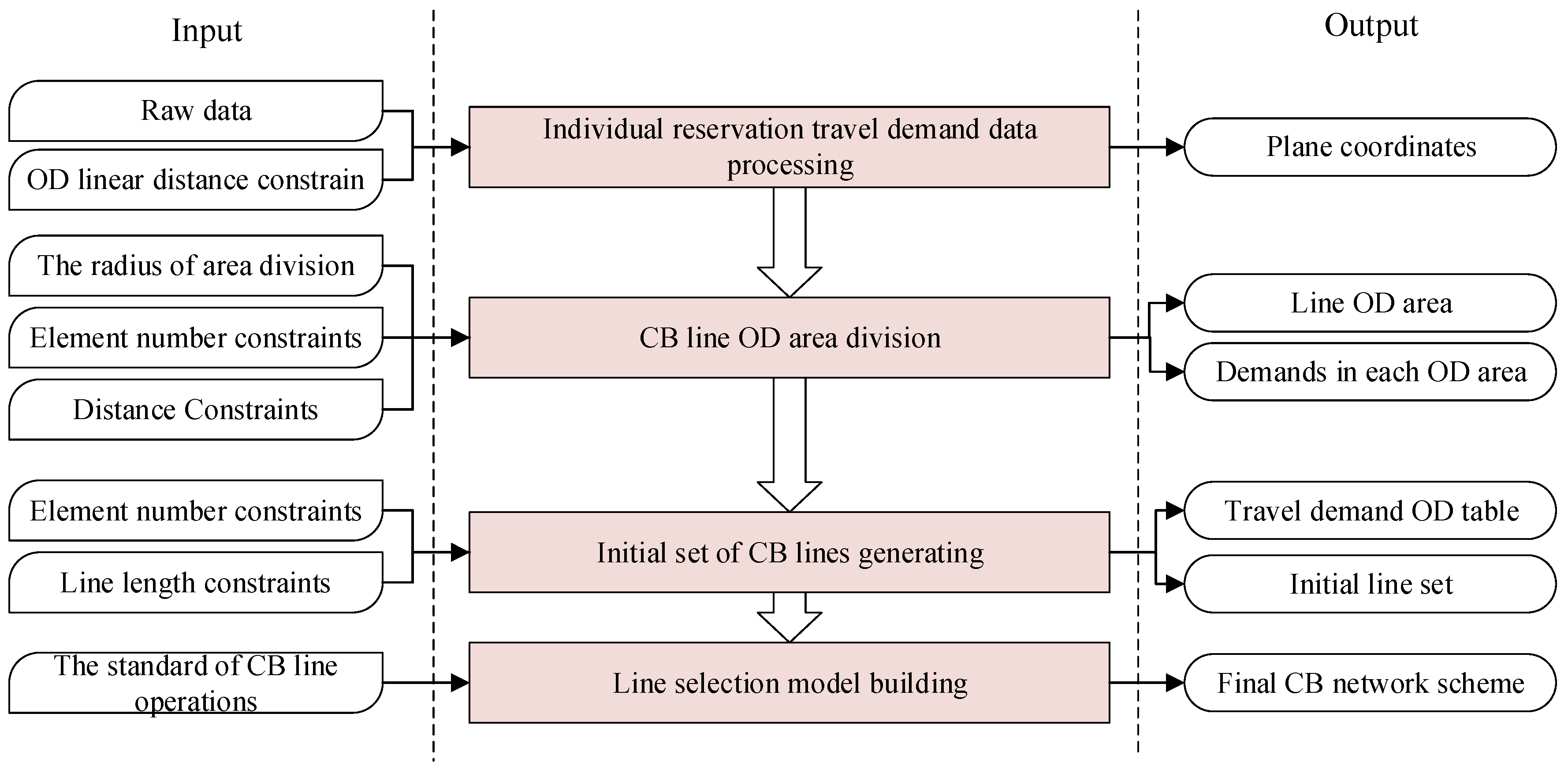
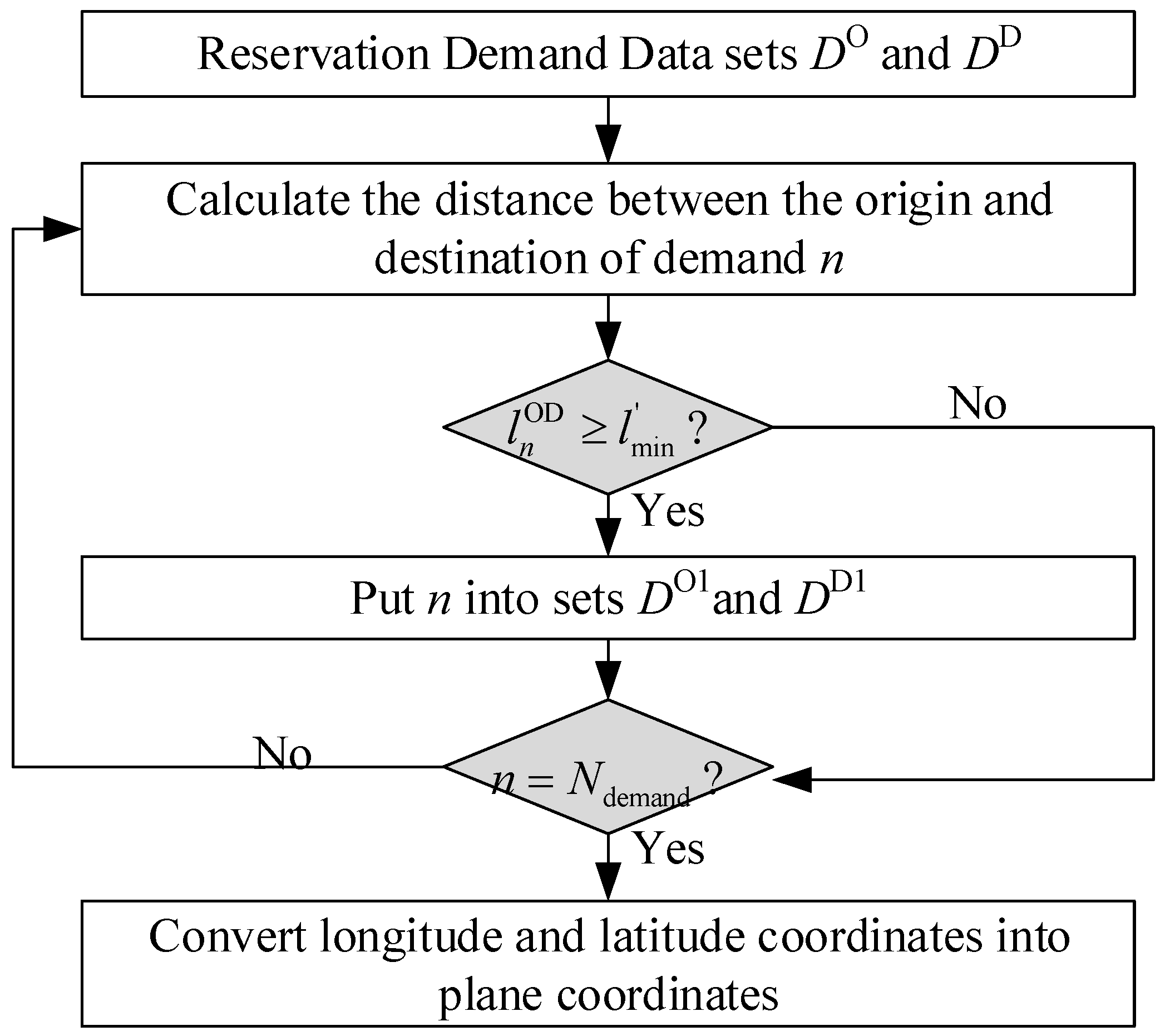

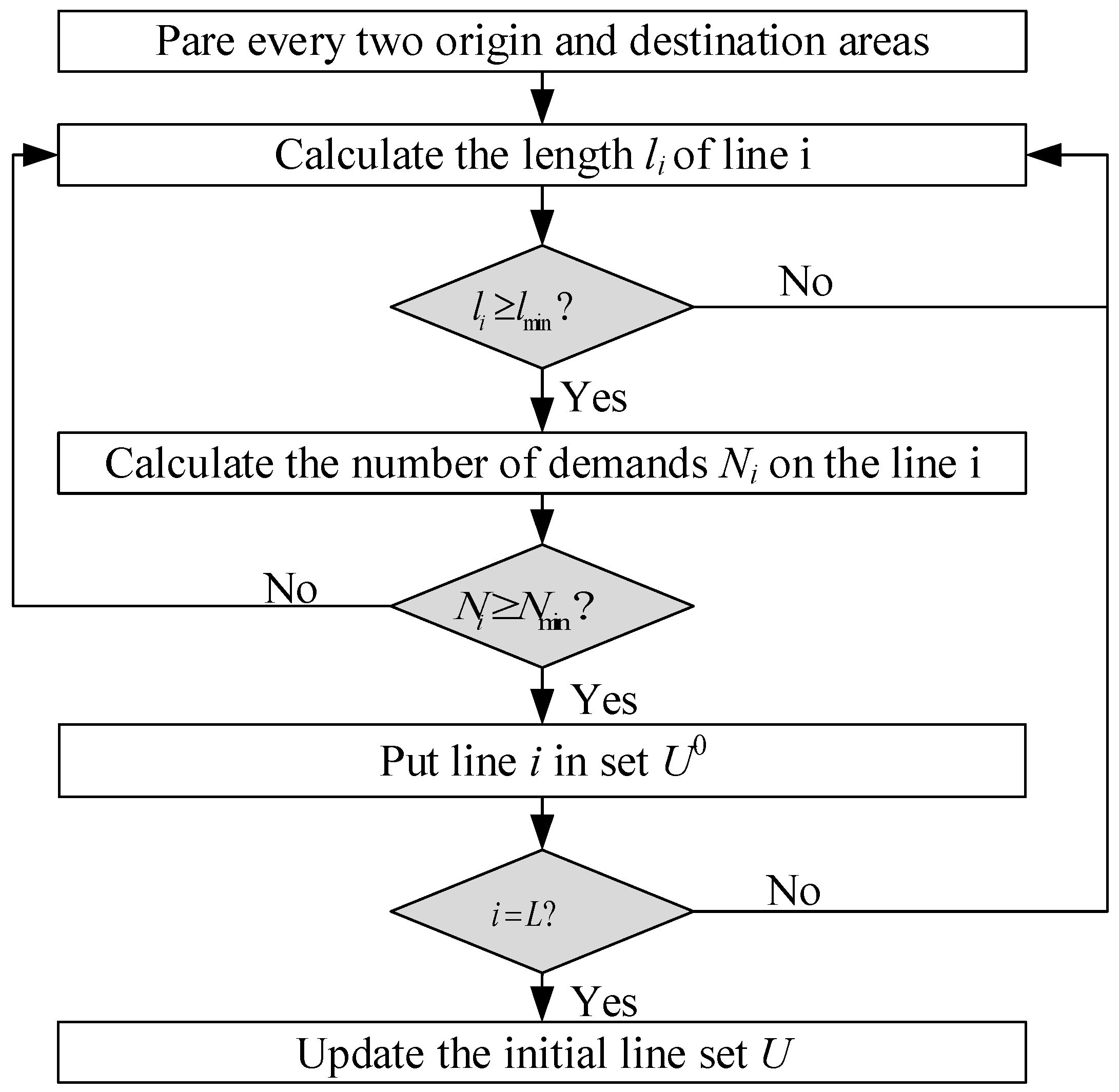
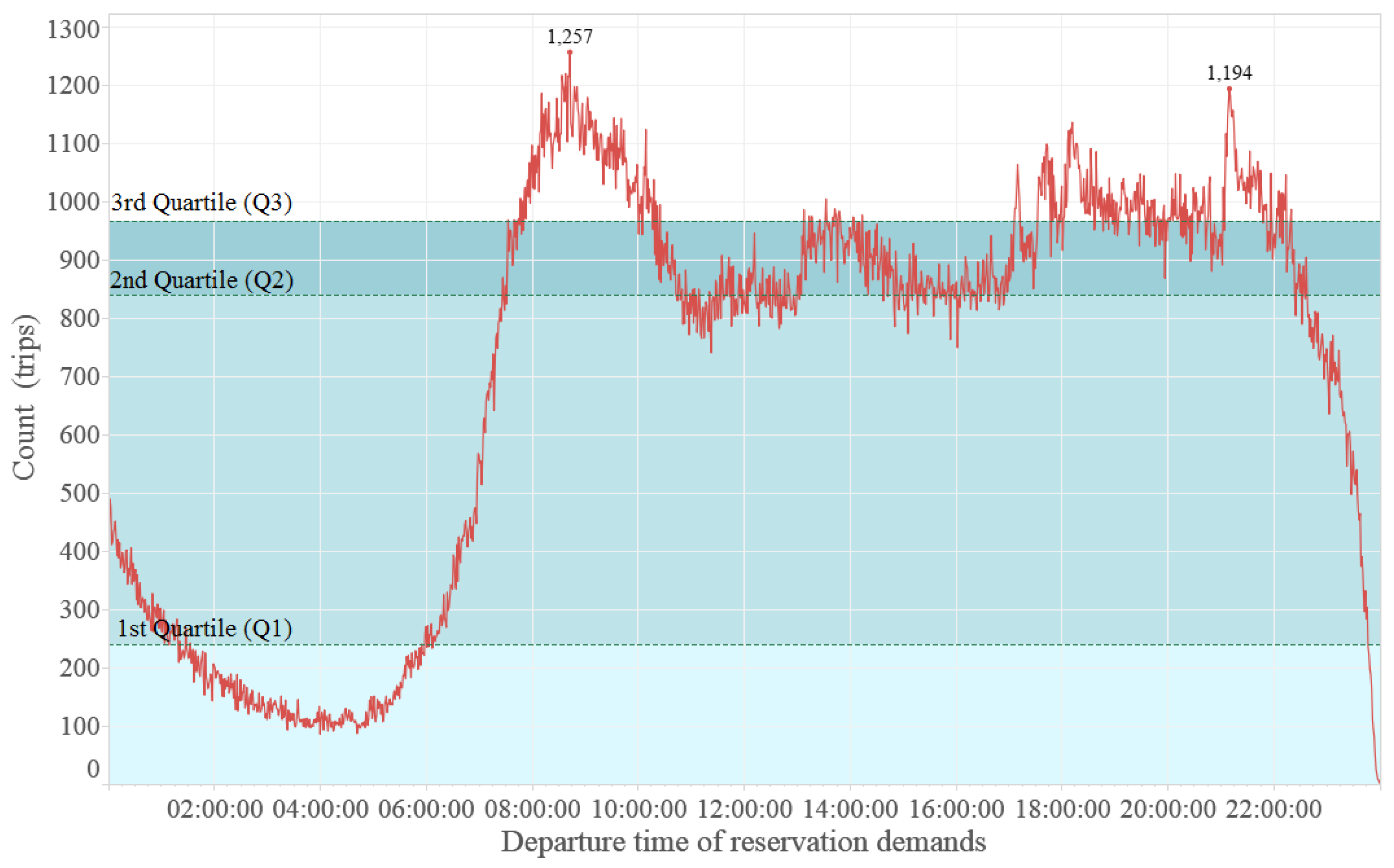









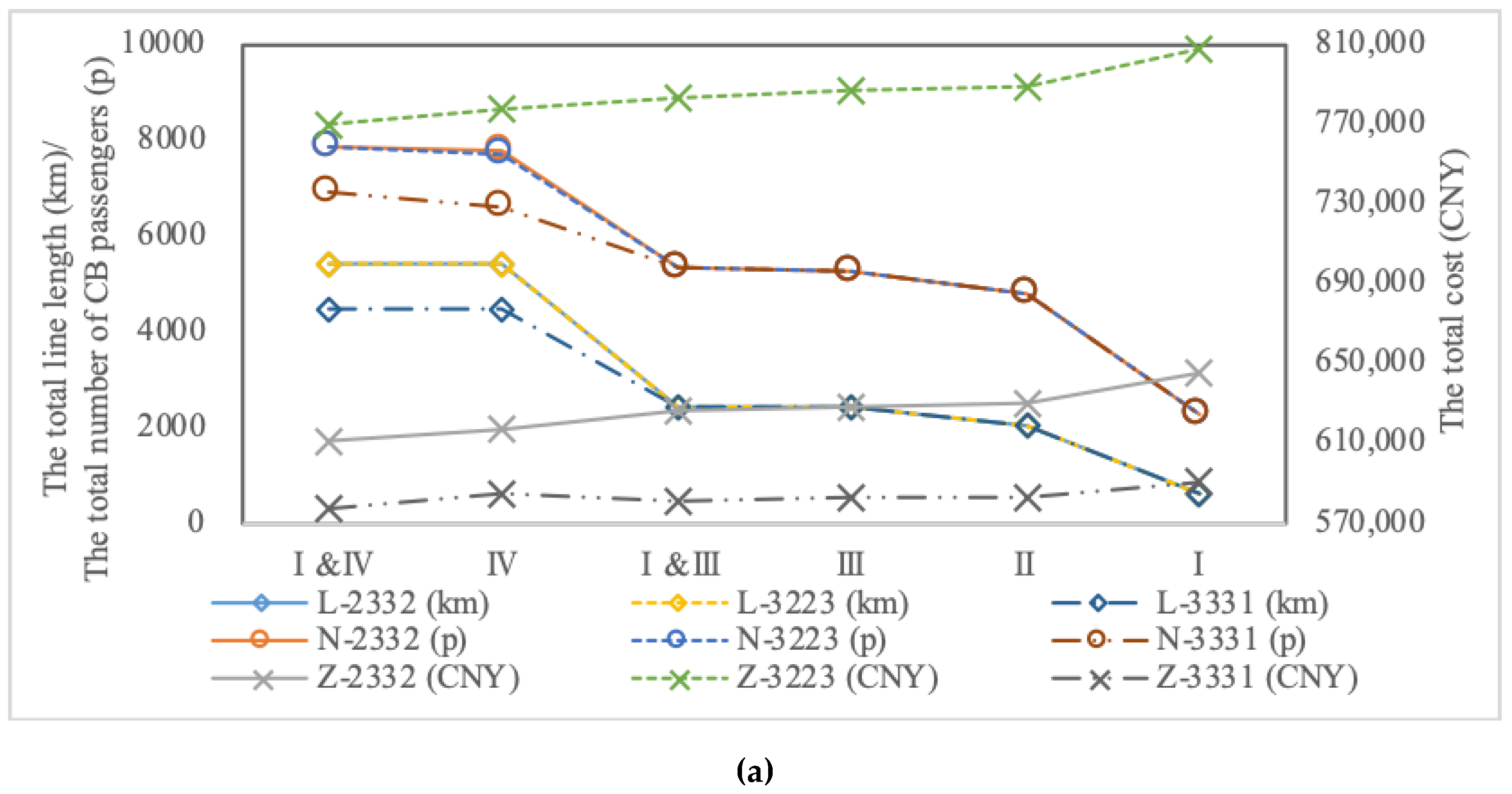
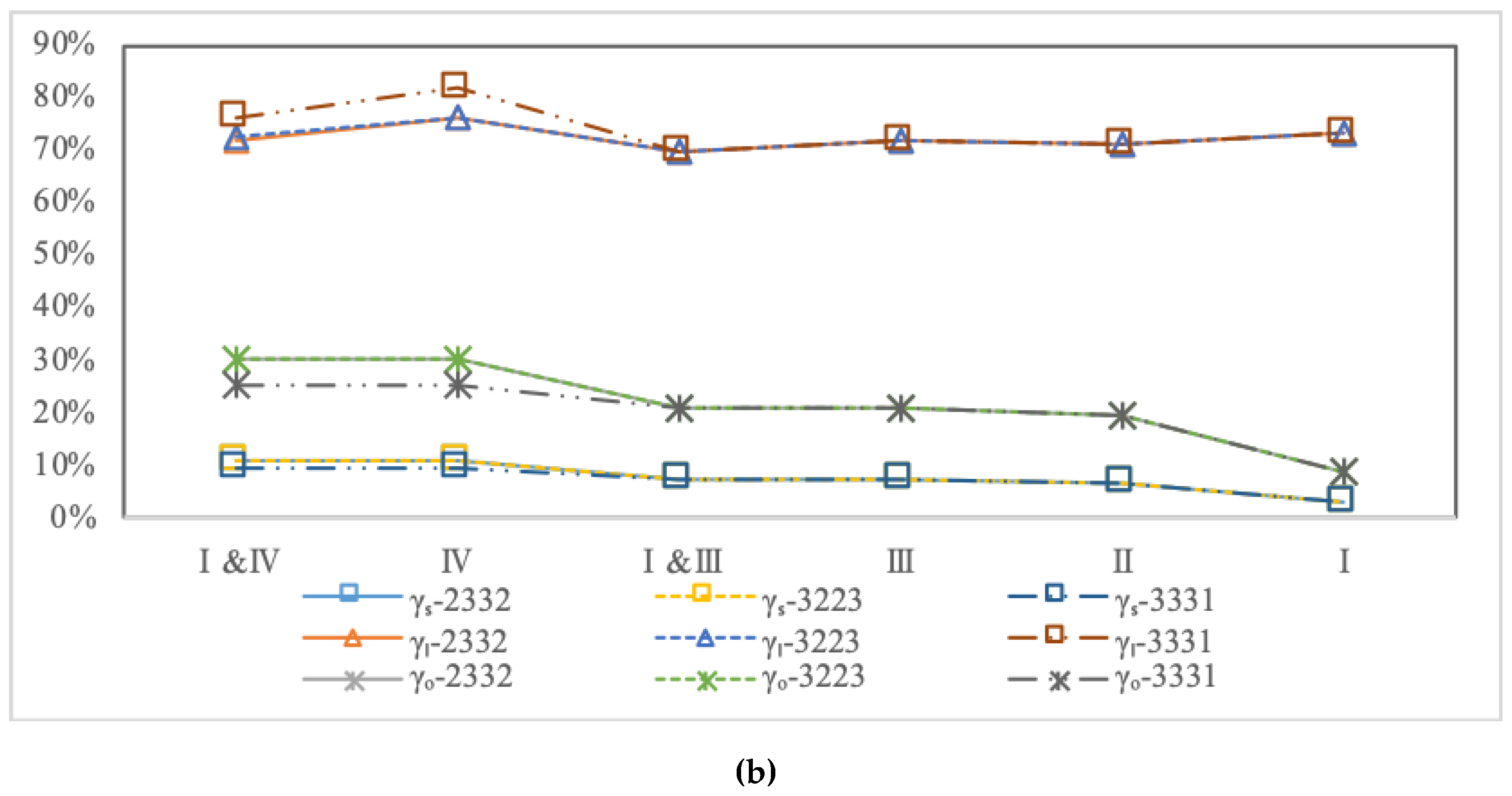
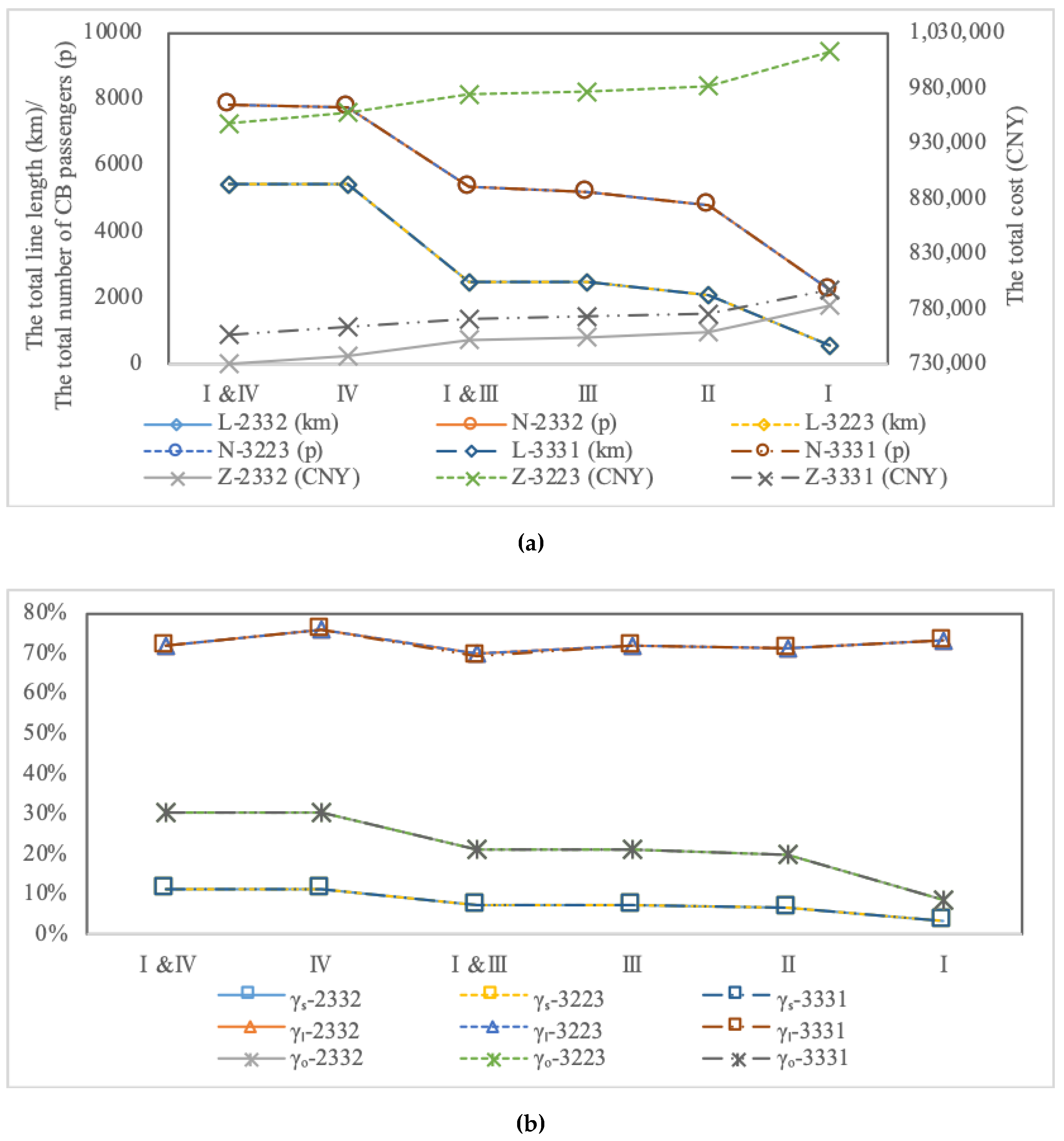
| CB VS. OCH | CB VS. Conventional Bus | ||
|---|---|---|---|
| Common Points | Advantages of CB | Common Points | Advantages of CB |
|
|
|
|
| Fieldname | Definition | Data Type |
|---|---|---|
| ORDER_NO | Order number | Varchar |
| DEST_VEH_LON | Longitude of real vehicle arrival site | Number |
| DEST_VEH_LAT | Latitude of real vehicle arrival site | Number |
| ON_TIME | Actual boarding time | Date |
| OFF_TIME | Actual disembarkation time | Date |
| PASSENGER_MIL | Passenger miles | Number |
| RECEIVABLE | Receivable amount | Number |
| REAL_VEHICLE_LON | Longitude of the actual departure point of the vehicle | Number |
| REAL_VEHICLE_LAT | Latitude of the actual departure point of the vehicle | Number |
| Parameters | ||||
|---|---|---|---|---|
| 1.64 | 0.97 | 0.97 | 0.88 | |
| 449 | 396 | 396 | 360 | |
| 1.3 | 1.2 | 1.2 | 1.0 |
| Weights | CB Vehicle Types | Number of Optimized Lines | Average Line Length (km) | Number of Type 1 CB Vehicles (Bus) | Number of Type 2 CB Vehicles (Bus) | Total Number of CB Vehicles (Bus) | Number of Passengers Served by Type 1 CB Vehicles | Number of Passengers Served by Type 2 CB Vehicles |
|---|---|---|---|---|---|---|---|---|
| 2332 | I & IV | 423 | 11.41 | 63 | 367 | 430 | 2262 | 4940 |
| IV | 423 | 11.41 | - | - | 485 | - | - | |
| I & III | 237 | 10.27 | 37 | 205 | 242 | 1526 | 3785 | |
| III | 237 | 10.27 | - | - | 259 | - | - | |
| II | 204 | 10.05 | - | - | 222 | - | - | |
| I | 61 | 9.51 | - | - | 63 | - | - | |
| 3223 | I & IV | 362 | 11.64 | 63 | 306 | 369 | 2262 | 4278 |
| I & III | 211 | 10.48 | 33 | 183 | 216 | 1400 | 3517 | |
| IV | 362 | 11.64 | - | - | 411 | - | - | |
| III | 211 | 10.48 | - | - | 232 | - | - | |
| II | 190 | 10.18 | - | - | 207 | - | - | |
| I | 61 | 9.51 | - | - | 63 | - | - | |
| 3311 | I & III | 97 | 10.90 | 34 | 67 | 101 | 1449 | 1509 |
| I & IV | 116 | 12.79 | 57 | 66 | 123 | 2105 | 986 | |
| I | 55 | 9.62 | - | - | 57 | - | - | |
| II | 93 | 10.62 | - | - | 103 | - | - | |
| III | 97 | 10.90 | - | - | 108 | - | - | |
| IV | 76 | 14.82 | - | - | 79 | - | - |
| Weights | CB Vehicle Types | Number of Optimized Lines | Average Line Length (km) | Number of Type 1 CB Vehicles (Bus) | Number of Type 2 CB Vehicles (Bus) | Total Number of CB Vehicles (Bus) | Number of Passengers Served by Type 1 CB Vehicles (People) | Number of Passengers Served by Type 2 CB Vehicles (People) |
|---|---|---|---|---|---|---|---|---|
| 2332 | I & IV | 486 | 11.12 | 63 | 430 | 493 | 2262 | 5551 |
| IV | 486 | 11.12 | - | - | 562 | - | - | |
| I & III | 238 | 10.26 | 37 | 208 | 245 | 1490 | 3855 | |
| III | 238 | 10.26 | - | - | 260 | - | - | |
| II | 204 | 10.05 | - | - | 222 | - | - | |
| I | 61 | 9.51 | - | - | 63 | - | - | |
| 3223 | III | 238 | 10.26 | - | - | 260 | - | - |
| I & IV | 466 | 11.23 | 63 | 410 | 473 | 2262 | 5364 | |
| IV | 466 | 11.23 | - | - | 534 | - | - | |
| I & III | 238 | 10.26 | 36 | 209 | 245 | 1459 | 3883 | |
| II | 204 | 10.05 | - | - | 222 | - | - | |
| I | 61 | 9.51 | - | - | 63 | - | - | |
| 3331 | I & IV | 302 | 11.53 | 63 | 246 | 309 | 2262 | 3651 |
| I & III | 208 | 10.49 | 40 | 172 | 212 | 1637 | 3251 | |
| II | 190 | 10.26 | - | - | 207 | - | - | |
| III | 208 | 10.49 | - | - | 229 | - | - | |
| IV | 302 | 11.53 | - | - | 349 | - | - | |
| I | 61 | 9.51 | - | - | 63 | - | - |
| Weights | CB Vehicle Types | Number of Optimized Lines | Average Line Length (km) | Number of Type 1 CB Vehicles (Bus) | Number of Type 2 CB Vehicles (Bus) | Total Number of CB Vehicles (Bus) | Number of Passengers Served by Type 1 CB Vehicles (People) | Number of Passengers Served by Type 2 CB Vehicles (People) |
|---|---|---|---|---|---|---|---|---|
| 2332 | I & IV | 489 | 11.10 | 63 | 433 | 496 | 2262 | 5578 |
| IV | 489 | 11.10 | - | - | 566 | - | - | |
| I & III | 238 | 10.26 | 37 | 208 | 245 | 1490 | 3855 | |
| III | 238 | 10.26 | - | - | 260 | - | - | |
| II | 204 | 10.05 | - | - | 222 | - | - | |
| I | 61 | 9.51 | - | - | 63 | - | - | |
| 3223 | I & IV | 486 | 11.12 | 63 | 430 | 493 | 2262 | 5551 |
| IV | 486 | 11.12 | - | - | 563 | - | - | |
| I & III | 238 | 10.26 | 37 | 208 | 245 | 1490 | 3855 | |
| III | 238 | 10.26 | - | - | 260 | - | - | |
| II | 204 | 10.05 | - | - | 222 | - | - | |
| I | 61 | 9.51 | - | - | 63 | - | - | |
| 3331 | I & IV | 388 | 11.42 | 63 | 332 | 395 | 2262 | 4606 |
| I & III | 238 | 10.26 | 40 | 202 | 242 | 1637 | 3687 | |
| III | 238 | 10.26 | - | - | 260 | - | - | |
| II | 204 | 10.05 | - | - | 222 | - | - | |
| IV | 388 | 11.42 | - | - | 444 | - | - | |
| I | 61 | 9.51 | - | - | 63 | - | - |
| Weights | CB Vehicle Types | Number of Optimized Lines | Average Line Length (km) | Number of Type 1 CB Vehicles (Bus) | Number of Type 2 CB Vehicles (Bus) | Total Number of CB Vehicles (Bus) | Number of Passengers Served by Type 1 CB Vehicles (People) | Number of Passengers Served by Type 2 CB Vehicles (People) |
|---|---|---|---|---|---|---|---|---|
| 2332 | I&IV | 489 | 11.10 | 63 | 433 | 496 | 2262 | 5578 |
| IV | 489 | 11.10 | - | - | 566 | - | - | |
| I&III | 238 | 10.26 | 38 | 207 | 245 | 1520 | 3827 | |
| III | 238 | 10.26 | - | - | 260 | - | - | |
| II | 204 | 10.05 | - | - | 222 | - | - | |
| I | 61 | 9.51 | - | - | 63 | - | - | |
| 3223 | I&IV | 489 | 11.10 | 63 | 433 | 496 | 2262 | 5578 |
| IV | 489 | 11.10 | - | - | 566 | - | - | |
| I&III | 238 | 10.26 | 37 | 208 | 245 | 1490 | 3855 | |
| III | 238 | 10.26 | - | - | 260 | - | - | |
| II | 204 | 10.05 | - | - | 222 | - | - | |
| I | 61 | 9.51 | - | - | 63 | - | - | |
| 3331 | I&IV | 489 | 11.10 | 63 | 433 | 496 | 2262 | 5578 |
| IV | 489 | 11.10 | - | - | 566 | - | - | |
| I&III | 238 | 10.26 | 42 | 202 | 244 | 1657 | 3687 | |
| III | 238 | 10.26 | - | - | 260 | - | - | |
| II | 204 | 10.05 | - | - | 222 | - | - | |
| I | 61 | 9.51 | - | - | 63 | - | - |
© 2019 by the authors. Licensee MDPI, Basel, Switzerland. This article is an open access article distributed under the terms and conditions of the Creative Commons Attribution (CC BY) license (http://creativecommons.org/licenses/by/4.0/).
Share and Cite
Han, Z.; Chen, Y.; Li, H.; Zhang, K.; Sun, J. Customized Bus Network Design Based on Individual Reservation Demands. Sustainability 2019, 11, 5535. https://0-doi-org.brum.beds.ac.uk/10.3390/su11195535
Han Z, Chen Y, Li H, Zhang K, Sun J. Customized Bus Network Design Based on Individual Reservation Demands. Sustainability. 2019; 11(19):5535. https://0-doi-org.brum.beds.ac.uk/10.3390/su11195535
Chicago/Turabian StyleHan, Zhiling, Yanyan Chen, Hui Li, Kuanshuang Zhang, and Jiyang Sun. 2019. "Customized Bus Network Design Based on Individual Reservation Demands" Sustainability 11, no. 19: 5535. https://0-doi-org.brum.beds.ac.uk/10.3390/su11195535




